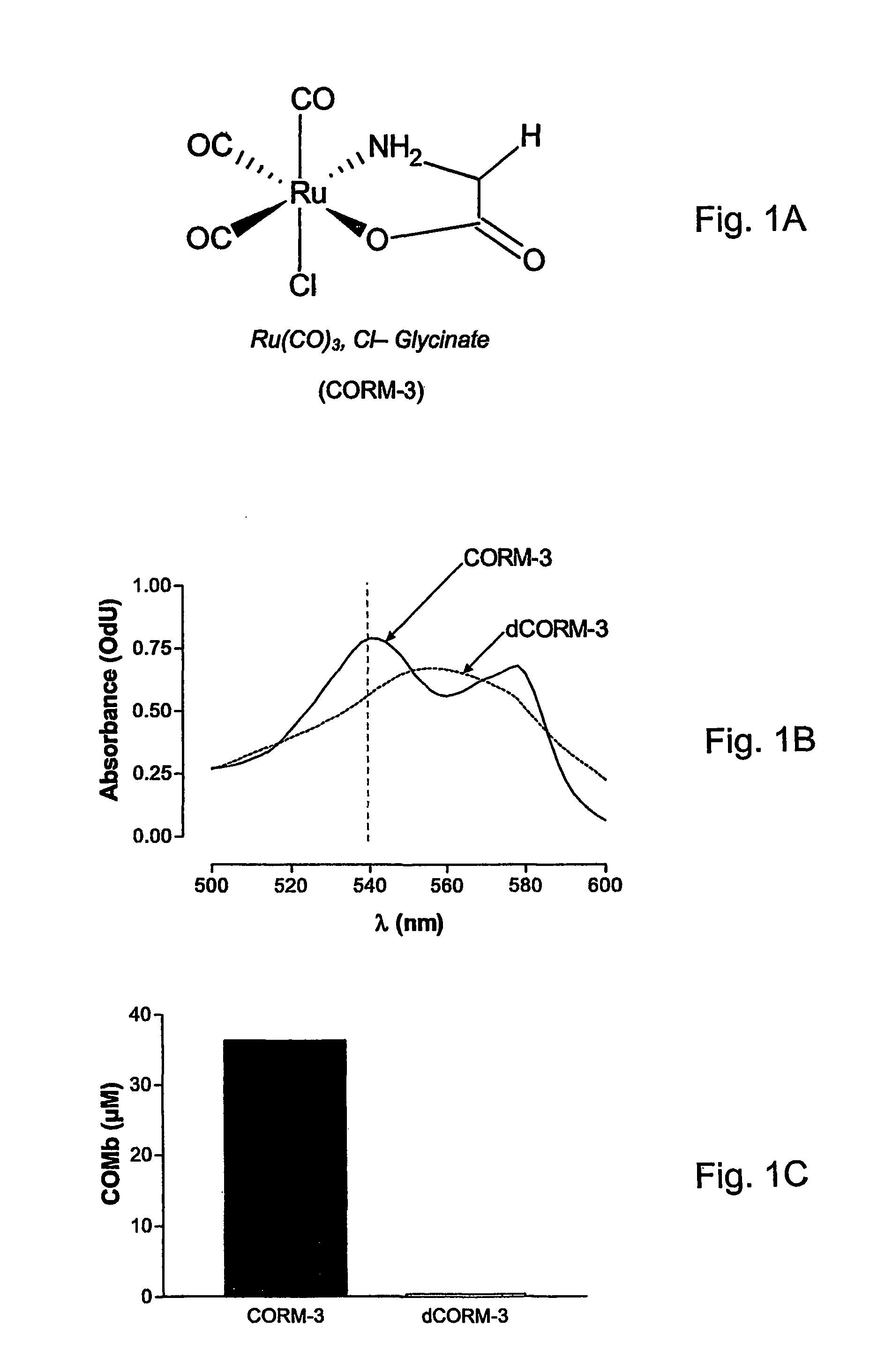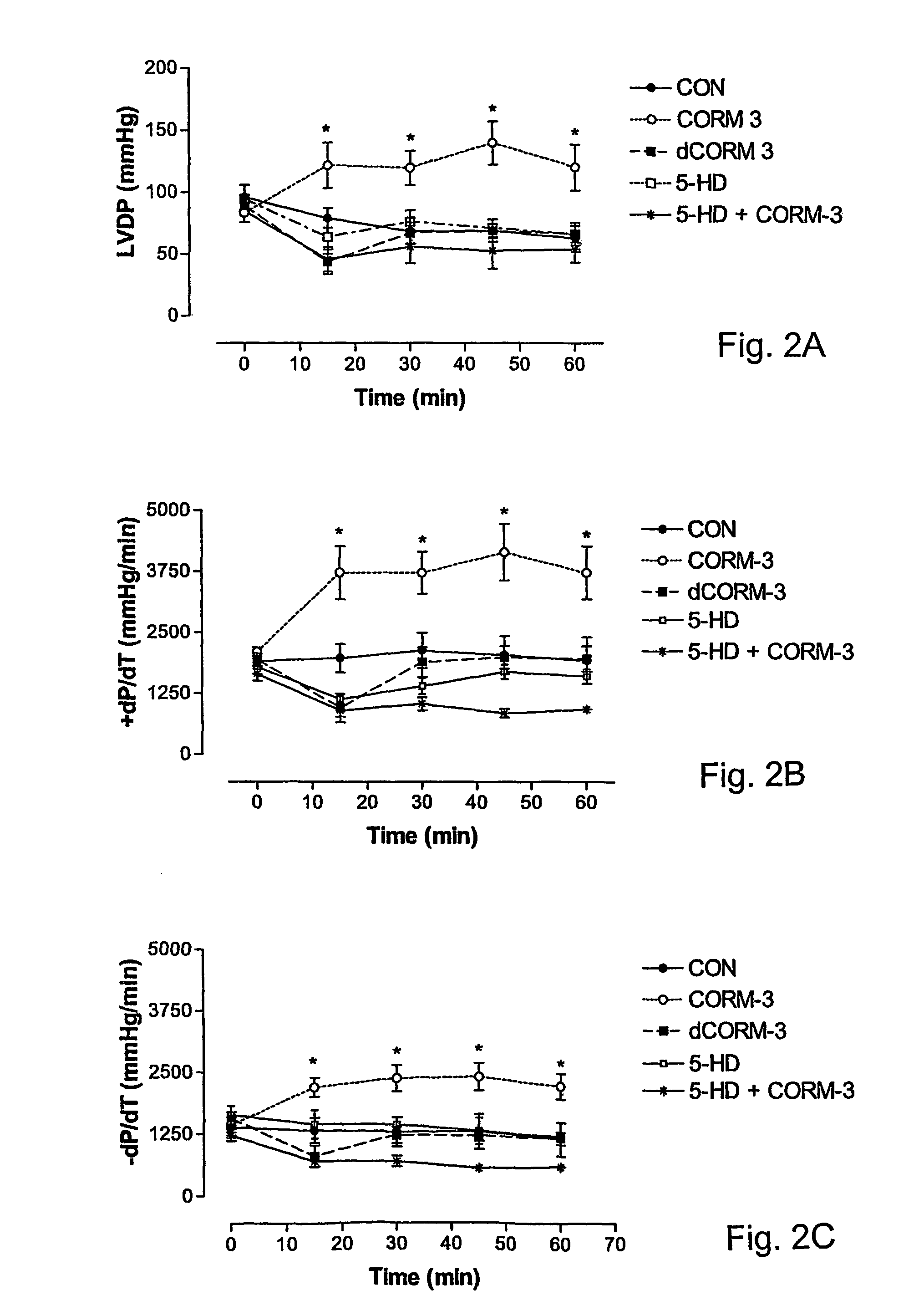Therapeutic delivery of carbon monoxide to extracorporeal and isolated organs
a technology of carbon monoxide and extracorporeal organs, which is applied in the direction of biocide, plant growth regulators, animal husbandry, etc., can solve the problems of affecting the organ isolated in such a manner, subject to ischaemic damage, etc., and achieve the effect of reducing the ischaemic damage of the organ
- Summary
- Abstract
- Description
- Claims
- Application Information
AI Technical Summary
Benefits of technology
Problems solved by technology
Method used
Image
Examples
Embodiment Construction
Reagents and Material
[0080]Tricarbonyldichloro ruthenium(II) dimer ([Ru(CO)3Cl2]2), 5-hydroxynoneate (5-HD), 2,3,5-triphenyltetrazolium chloride (tetrazolium red) and all the other reagents were purchased from Sigma (Poole, Dorset) unless specified otherwise.
[0081]Stock solutions of Ru(CO)3Cl(NH2CH2CO2)(CORM-3) (8 mM) were prepared by solubilizing the compound in distilled water. Synthesis of CORM-3 are described below. Decomposed CORM-3 (dCORM-3) was prepared by dissolving CORM-3 in Krebs-Henseleit buffer and allowing the solution to stand overnight (18 h) at room temperature. 2,3,5-triphenyl-tetrazolium chloride (tetrazolium red) solution (3% w / v) was prepared freshly in Krebs-Henseleit buffer at the end of each experimental protocol prior to infusion into the isolated heart.
[0082]All data are expressed as mean±s.e.m. Differences between the groups analysed were assessed by the Student's two-tailed t-test, and an analysis of variance (ANOVA) was performed where more than two treat...
PUM
| Property | Measurement | Unit |
|---|---|---|
| temperature | aaaaa | aaaaa |
| temperature | aaaaa | aaaaa |
| temperature | aaaaa | aaaaa |
Abstract
Description
Claims
Application Information
 Login to View More
Login to View More - R&D Engineer
- R&D Manager
- IP Professional
- Industry Leading Data Capabilities
- Powerful AI technology
- Patent DNA Extraction
Browse by: Latest US Patents, China's latest patents, Technical Efficacy Thesaurus, Application Domain, Technology Topic, Popular Technical Reports.
© 2024 PatSnap. All rights reserved.Legal|Privacy policy|Modern Slavery Act Transparency Statement|Sitemap|About US| Contact US: help@patsnap.com










